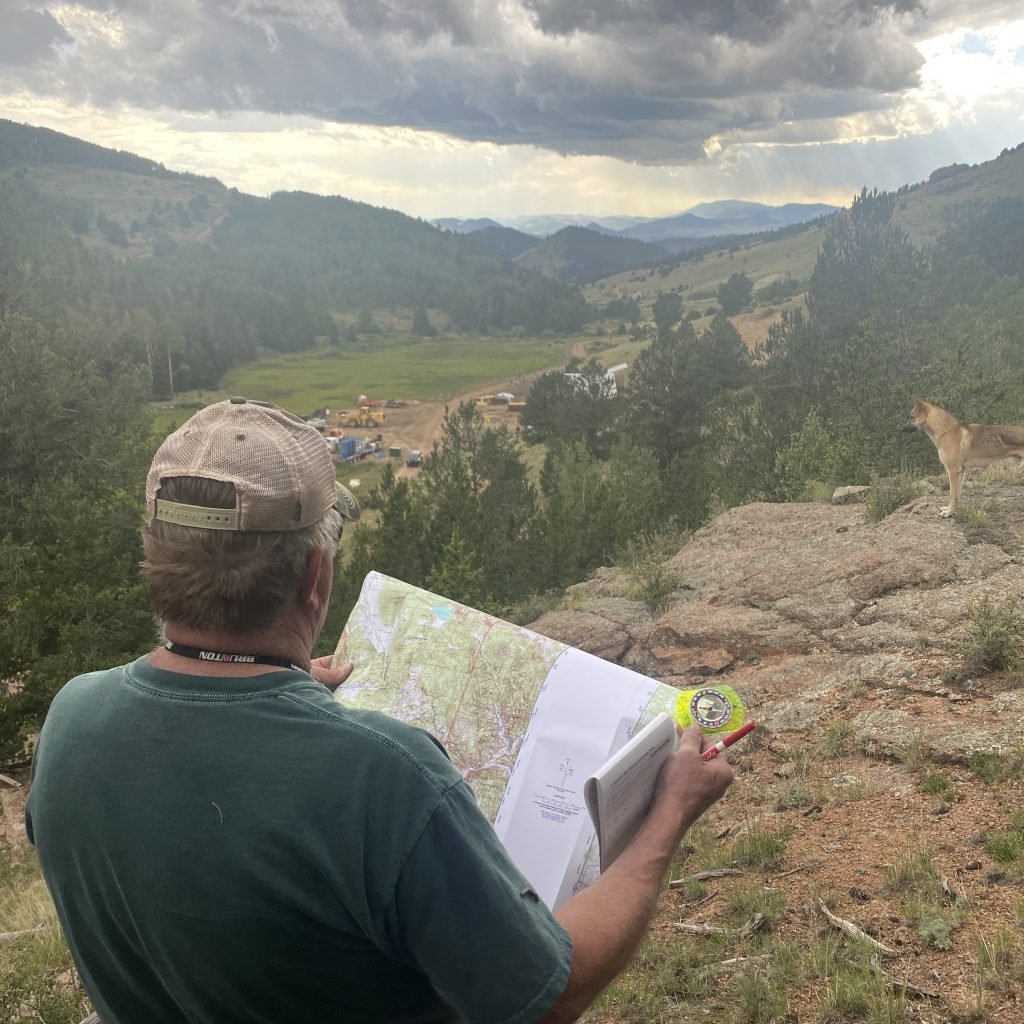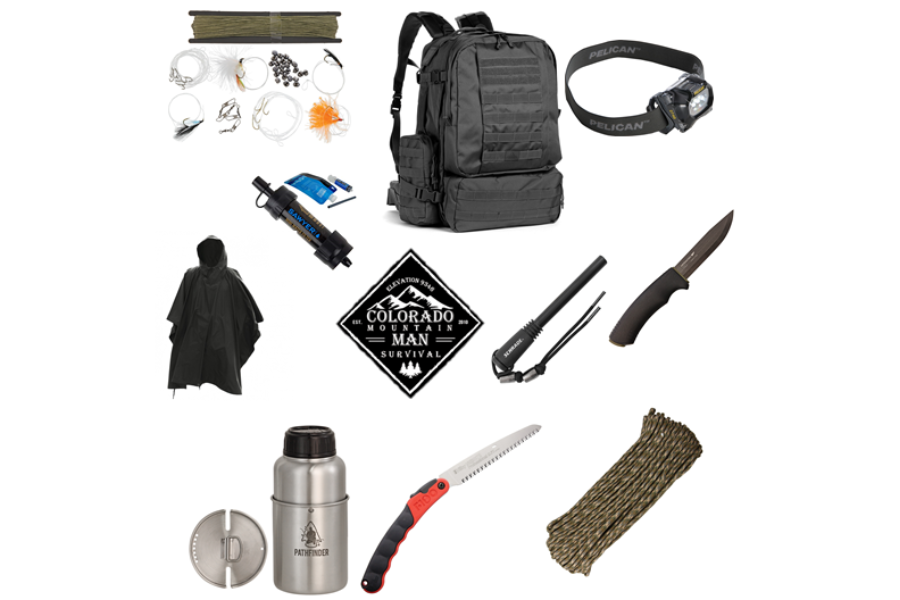Cart
9 min read
How to Tie The Double Half-Hitch Knot

Double Half-Hitch Knot: Step-by-Step Guide & Expert Tips
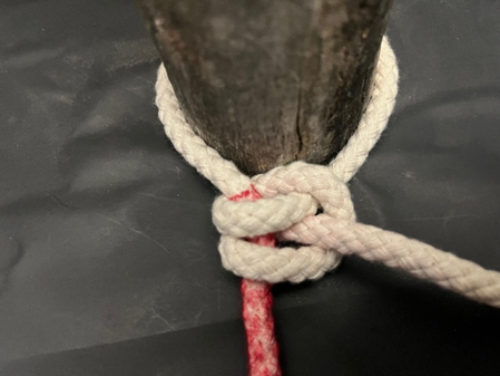 There is an old joke that says, "If you do not know a knot, then tie a lot!" While it is funny, there is a lot of truth behind it. Sometimes, when faced with a problem, you may try to solve it with whatever you have on hand, even if it is not the best solution. This is exactly what happens when you use the wrong knot. It might work, but it will take extra time, waste more cordage, and probably be less reliable than the right knot. The trick is to know which knot to use, just like knowing the right tool for a job. The better the knot, the quicker and more securely you can get the job done.
There is an old joke that says, "If you do not know a knot, then tie a lot!" While it is funny, there is a lot of truth behind it. Sometimes, when faced with a problem, you may try to solve it with whatever you have on hand, even if it is not the best solution. This is exactly what happens when you use the wrong knot. It might work, but it will take extra time, waste more cordage, and probably be less reliable than the right knot. The trick is to know which knot to use, just like knowing the right tool for a job. The better the knot, the quicker and more securely you can get the job done.
One knot that can be used to get you out of most jams, and fake your way through most of the others, is the double half-hitch knot. This simple but effective knot is a game-changer for so many tasks, from securing a tarp to tying down gear. When you know how to tie the double half-hitch knot and its variations, you can save time, use less cordage, and ensure that your load is secure. Plus, it is easy to modify, and you can even adjust it to make other useful knots like the taut-line hitch or the taught tarp hitch, which gives you the ability to tighten or loosen the knot as needed and pull tight ridgelines even while wearing mittens.
In this blog, we will take a closer look at the double half-hitch knot, how to tie it, and several practical ways to use it in the field. Along the way, we will also explore some common modifications and share a few tips and tricks to make your knot-tying experience easier and more reliable.
How to Tie the Double Half-Hitch Knot
The double half-hitch knot is a reliable way to secure a rope to an object, such as a post, tree, or any fixed point. Here are the steps to tie it:
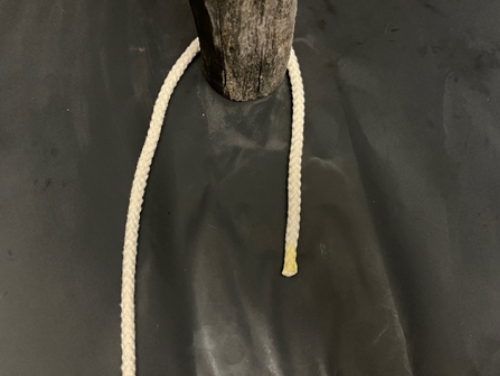
Step One: Create a Loop Begin by passing the working end of the cord around the object, forming a loop around it. Working End: the working end is the bit of rope that you are currently using. So if it is in your hands being used, then it is the working end.
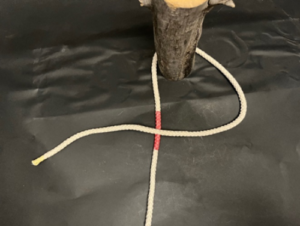
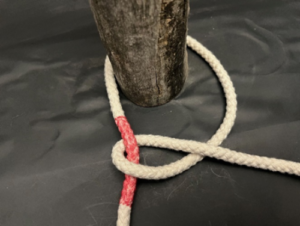
Step Two: Pass the Cord Over: Now, bring the working end of the cord over the standing part of the rope, just like you would when tying a simple half-hitch. Then bring the working end through the P-shaped loop you just created. Tighten each loop, or hitch, as you go. Standing Part: The standing part of the cord is the non-active part of the rope being used.

Step Three: Loop Again Pass the working end over the standing part of the cord again to make a second loop. Just like last time, take the working end through this new loop, and make sure to tighten up as you go.
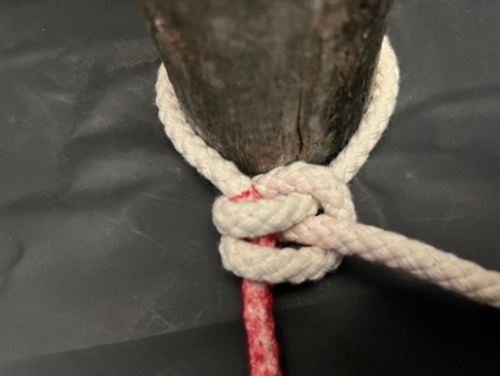
Step Four: Tighten The double half-hitch will hold fast and is actually very secure so long as the line is under tension. It can wiggle loose in a slack line, so if you are using it to tie a horse to a post or a boat to a dock, throw a few extra half hitches in there and tighten each of them as you go.
Pro tip: You can add any stopper knot to the tail of the working end to add some protection from your knot slipping loose.
The double half hitch knot is incredibly versatile, but it is especially useful when attaching your rope to something. I use this knot all the time in the field, it is great for attaching your rope to a pole, tree, tent grommet, or another rope as in securing another valuable knot The Truckers Hitch.
When you find yourself upside down attaching a tarp to a swamp cooler, and you just can not remember the knot you were going to use; this is the perfect time to tie a whole series of double half hitches. There are certainly better knots for specific uses, but if you can remember nothing else, the double half hitch is worth a shot. With a few slight modifications this simple knot becomes even more versatile, let us look at one of those as well.
Modifications of the Double Half-Hitch: How to Tie The Taut-Line Hitch
One of the most useful modifications of the double half-hitch is the taut-line hitch. This variation of the knot allows you to adjust the tension on the line, making it perfect for tasks that require the ability to tighten or loosen the rope as needed.
The taut-line hitch is commonly used when setting up tents or tarps because it lets you adjust the tension if the line loosens over time or if you need to change the tension for better stability or to make adjustments. Do not overlook the Taut Line Hitch for power either. I once watched my oldest son pull several tall trees to an almost completely bent-over position using just this knot and a lever stick. Here is how you can modify the double half-hitch to make a taut-line hitch:
Note: We will be making a sort of P shape as we tie our hitches. I will refer to the inside and outside of the P as pictured below. The first picture will be called inside the loop and the second will be called outside of the loop.
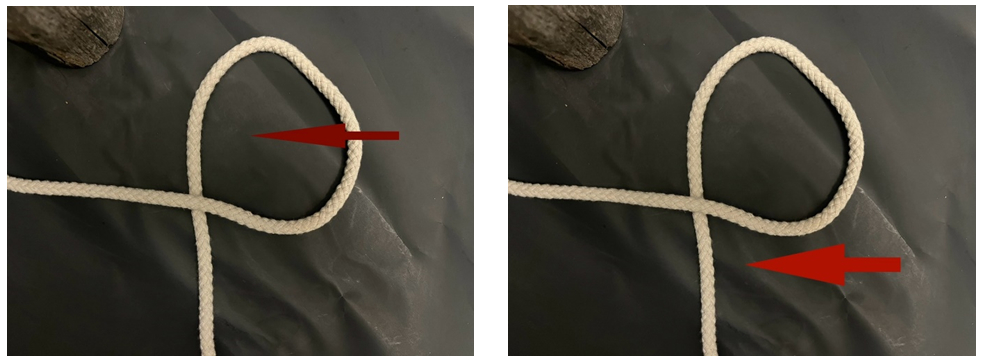
Step One: First things first we need to wrap our rope around whatever we are anchoring to. Do this exactly as we did the first step of the double half hitch. Take the working end over the standing part to form a P shape, then bring the working end through the inside of the loop.
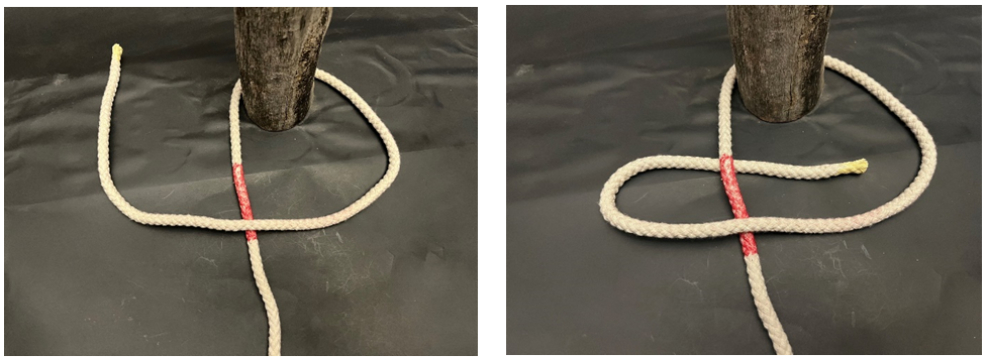
Step Two: Take the working end through the inside of the loop again.
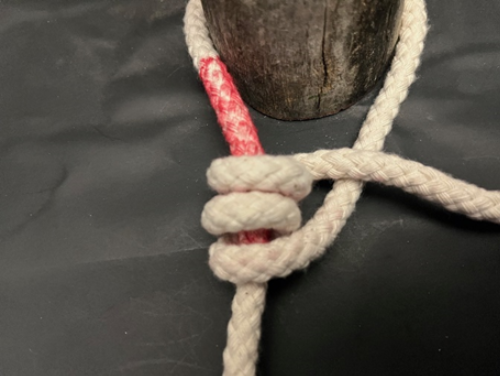
Step Three: One more half hitch to go, but this one goes on the outside of the loop on what would be the leg of the P shape.

Step Four: Dress, or tidy up the knot. Make sure everything is nice and tight.
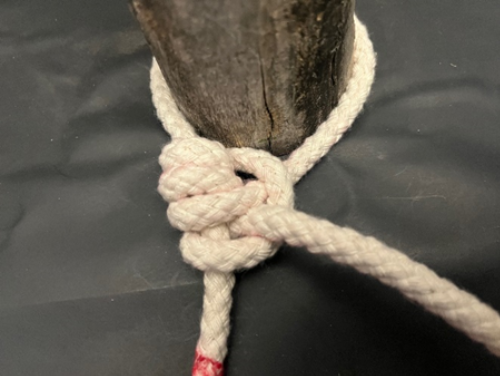
The real strength of the Taught Line Hitch is that it can be used to tighten or loosen, your line by sliding along the standing part of your rope. The Knots will slide when pushed but hold in place when left alone. I use Taught Line hitches for several things, but my favorite use is for putting up tarp shelters. Pushing the knot away from whatever it is tied to will tighten the line and pushing the knot towards the anchor point will loosen the line.
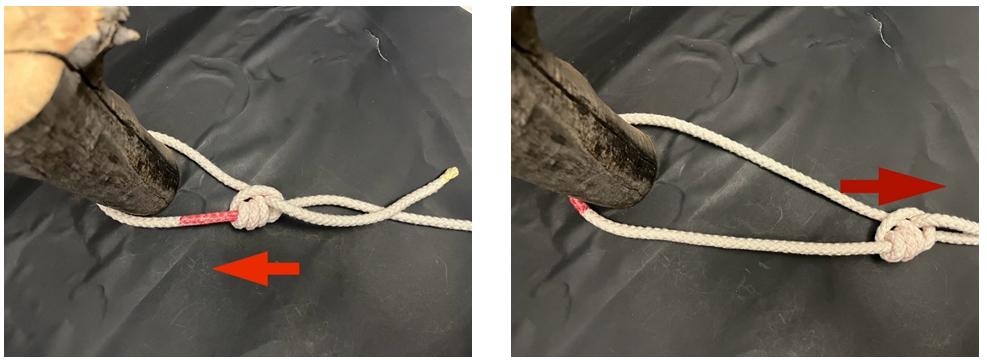
Tips and Tricks for Using the Double Half-Hitch Knot
- Practice with Different Cordage: The double half-hitch works with a wide variety of cordage, from thin paracord to thicker rope. However, different materials may behave differently, so it is a good idea to practice with different types of rope to understand how the knot tightens and holds.
- Make it Tight: To ensure the knot holds even under pressure, give the working end a good pull while tightening. The tighter you pull, the more secure the knot will be.
- Use it with Other Knots: The double half-hitch is great on its own, but it can also be combined with other knots. For example, you can use it to finish off a Trucker's Hitch or combine it with a Slip Knot to make it easier to release the rope when you need to, this is especially useful in wet weather.
- Use as a Temporary Knot: If you need a quick and temporary way to secure something, the double half-hitch is an excellent choice. It can be tied and untied easily, making it great for situations where you need to adjust the cordage quickly.
Double Half-Hitch Knot: Final Tips & Takeaways
The double half-hitch knot is one of those knots that you will use time and time again. It is simple to tie, highly versatile and can be modified to suit different needs, like the taut-line hitch. Whether you are securing gear, setting up a tarp, or creating a makeshift shelter, the double half-hitch will often get the job done.
By knowing how to tie the right knot for the right job, you will work smarter, not harder. Do not just tie a lot—learn the knots that will make your tasks easier and more efficient. Make sure to join our newsletter so you do not miss any of our useful knot series. We would love to see how you use your favorite knots too, so make sure to tag us in #TheSurvivalUniversity
We will address some of the most useful knots in future blogs, but for now, if you can not recall a certain knot, then give the double half hitch a shot and tie a lot.
Stay safe out there, see you on the adventure trail soon,
Hutch
We’d love to hear your thoughts! Please leave a comment below – your feedback not only helps us improve our content, it also helps more people discover our guide. Thanks for being part of our community!
About the Author

Aaron “Hutch” Hutchings is a seasoned survival, bushcraft, and wilderness living instructor with years of experience both as a student and a teacher. He is the owner of Ready Set Adventure Box (www.readysetadventurebox.com) and serves as a lead instructor at The Survival University (www.thesurvivaluniversity.com), where he teaches both beginner and advanced courses, as well as runs youth and family programs. Hutch has studied under some of the biggest names in the survival industry, and has even worked with a few of them directly.
A former Marine and lifelong Boy Scout, Hutch grew up immersed in outdoor skills, thanks in part to his grandfather, another outdoor instructor who used training with survival legends as rewards for achieving goals. Hutch is also the author of four books and brings a unique perspective to his teaching as someone who is autistic. His passion for survival skills and outdoor education shines through in every class he teaches.
Leave a Comment
What Nash Quinn’s Disappearance Teaches Us About Being Ready for the Backcountry
Nash Quinn vanished on a routine ride near Laramie. His story is a powerful reminder of why preparation, communication, and humility in the outdoors matter...
Recommended Gear List For Courses
Colorado is a cold weather climate most of the year and with our survival school at 9400 feet, it can get frigid at night, even…
Survival Training Near Me: Why the Best Might Be Worth the Trip
Discover why the best survival training might mean leaving the city. Explore The Survival University’s 4000+ acres and 20+ expert instructors!
Bugging In Guide Part 1: Drain Your Water Heater
Learn how to access hidden water in your home by safely draining your water heater during emergencies. A must-read for urban survival and bugging in.
Flint Knapping for Beginners: My Hilarious Failures & How to Do It Right
Flint knapping sounds easy—until you try it. Here’s my journey of frustration, flying shards, and why some people (but not me) make it look effortless.
What to Do When You Encounter a Wolf in the Wild
Wolves are neither villains nor heroes—they’re survivors. Explore their role in nature, the myths that surround them, and what we can learn from their resilience.




